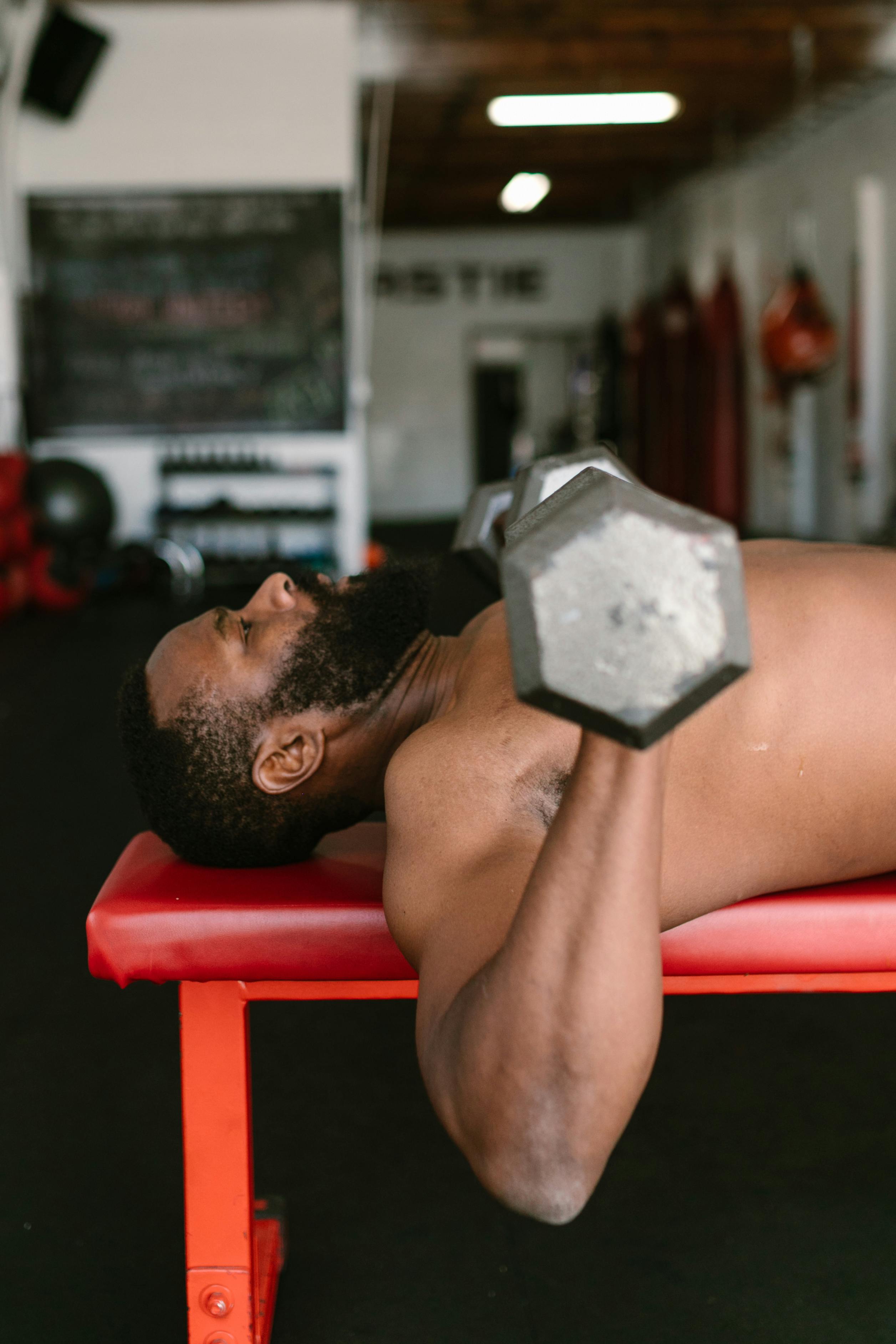“`html
Effective Ways to Strengthen Your Upper Chest Muscles in 2025 – Proven Exercises
Strengthening the upper chest is vital for overall upper body development, whether you’re a fitness novice or an experienced bodybuilder. A well-defined chest not only enhances physical appearance but also contributes significantly to functional strength and athletic performance. In this guide, we will explore effective exercises and training strategies designed to target the upper chest, promoting muscle growth and definition. We will also discuss essential fitness tips, proper nutrition, and ways to stay motivated on your fitness journey.
By incorporating these upper chest exercises into your routine, you will achieve balanced muscle development and improve your performance in various sports and physical activities. Let’s get started by looking at practical ways to enhance your exercises für die Brustmuskulatur.
Essential Exercises for Upper Chest Development
Building on the fundamentals of chest training, focusing on upper chest exercises can yield significant benefits. Let’s delve into the best exercises to incorporate into your Brusttraining.
Incline Bench Press Techniques
The incline bench press is a staple in Krafttraining Brust. By adjusting the bench to a 30-45 degree angle, you effectively target the upper pectorals, leading to increased strength and size. When performing the incline bench press, ensure you maintain a firm grip and control your movements, focusing on squeezing the upper chest at the top of the lift. This helps prevent injury while maximizing gains.
Start with lighter weights to master your form before progressing. Aim for 3-4 sets of 8-12 reps, ensuring you allow for adequate rest between sets to optimize recovery.
Incline Dumbbell Flyes
Another effective upper chest exercise is the incline dumbbell flye. This movement allows for a greater stretch in the chest compared to pressing movements. Lying on an incline, hold the dumbbells above your chest, with a slight bend in your elbows. As you lower the dumbbells outward, focus on the chest muscles working to control the weight.
Perform 3 sets of 10-15 reps for maximum benefit. This exercise not only isolates the upper chest but also enhances the mind-muscle connection, which is vital for progressive overload.
Resistance Band Chest Press
Utilizing a resistance band for chest presses can be an excellent way to incorporate variability into your workout routine. Anchor the band securely, and perform presses similar to the incline bench press, targeting the upper chest effectively. Resistance bands also provide constant tension, which is beneficial for muscle activation throughout the range of motion.
Incorporate 3 sets of 12-15 reps into your routine, ensuring you adjust the band tension according to your fitness level.
Integrating Bodyweight Exercises for Upper Chest Strength
With these basic exercises established, let’s explore how Körpergewicht Übungen can complement your routine, especially if you prefer working out at home.
Push-Ups with Elevated Feet
Standard push-ups can be modified by elevating your feet on a surface to shift the focus toward the upper chest. This variation engages your core while enhancing upper chest activation. Maintain proper form by keeping your body straight and lowering your chest until it’s just above the ground.
Aim for 3 sets of as many reps as possible, keeping your rest periods short to boost intensity.
Decline Push-Ups
Decline push-ups further target the upper chest by positioning your feet on an elevated surface. This helps to increase the angle of the work, making your upper pecs work harder. Ensure your elbows remain tucked close to your body throughout the movement.
Complete 3-4 sets of 8-12 reps for optimal results, incorporating these into a superset with other chest exercises for an added challenge.
Chest Dips
Though primarily targeting the lower chest, leaning forward while performing assisted dips can significantly engage your upper chest. Focus on keeping your elbows close and maintaining a forward lean to emphasize the upper pectorals.
Start with 3 sets of 6-10 reps, allowing for adequate rest and gradually increasing your body weight for progression.
Nutrition Strategies for Optimal Muscle Growth
Taking this concept further, an effective training program needs to go hand in hand with proper nutrition. Nutrition plays a significant role in muscle recovery and overall fitness.
Importance of Protein Intake
A well-balanced diet rich in protein is essential for muscle repair and growth. Aim for at least 1.6 to 2.2 grams of protein per kilogram of body weight daily to support muscle development. Include sources like chicken, fish, legumes, and dairy products in your meals.
Combining protein with healthy fats and complex carbohydrates can fuel your workouts and enhance recovery. For instance, pairing chicken breast with sweet potatoes and avocado provides a balanced meal for muscle growth.
Hydration for Performance
Staying hydrated is critical for peak performance in your workouts. Dehydration can lead to muscle cramps and reduce workout efficiency. Aim for at least 2-3 liters of water daily, adjusting based on activity levels and climate.
Moreover, consider electrolyte drinks during intense workouts to replenish lost nutrients effectively.
Developing a Routine for Upper Chest Training
With these effective exercises and nutritional strategies covered, let’s discuss how to integrate this knowledge into an actionable training plan tailored for the upper chest.
Sample Weekly Upper Chest Workout Plan
Designing a weekly plan can help ensure consistent training of the upper chest. For example, you could allocate specific days for chest workouts, such as:
- Monday: Incline Bench Press & Incline Dumbbell Flyes
- Wednesday: Bodyweight Training (Push-Ups, Dips)
- Friday: Resistance Band Exercises & Core Work
This approach allows for rest and recovery alongside muscle growth. Remember to adjust intensity based on your fitness level, integrating progressive overload as you advance.
Common Mistakes to Avoid in Chest Training
As vital as exercise and nutrition are, avoiding common pitfalls in training is crucial for success. Let’s address some prevalent mistakes within upper chest workouts.
Neglecting Rest and Recovery
Overtraining can hinder progress. Ensuring adequate rest between sessions for your upper chest, approximately 48 hours, is crucial for muscle recovery.
Poor Form and Technique
Using weights that are too heavy often leads to improper form, risking injury. Always prioritize quality over quantity, and seek guidance if unsure about your technique.
Inconsistent Training
A lack of consistency can stall your progress. Setting clear fitness goals and adhering to a structured workout plan can enhance accountability and foster results.
Q&A Section on Upper Chest Training
What are the best exercises for the upper chest?
The best exercises include incline bench press, incline dumbbell flyes, and resistance band chest presses. Incorporating these into your routine can significantly enhance upper chest strength and size.
How often should I train my upper chest?
Training your upper chest ideally 1-2 times per week allows for adequate recovery while promoting muscle growth. Ensure that you alternate with other muscle groups for balanced development.
Can I train the upper chest at home?
Absolutely! Exercises such as elevated push-ups and chest dips are effective bodyweight alternatives that can be performed at home without equipment.
What nutrition is best for muscle growth?
Eating a diet rich in proteins, complex carbohydrates, and healthy fats is essential. Include chicken, quinoa, vegetables, and nuts for optimal muscle recovery and growth.
How can I track my progress effectively?
Monitoring your progress through a workout journal or fitness app can help you stay accountable and see where improvements are made or adjustments are needed.


“`
